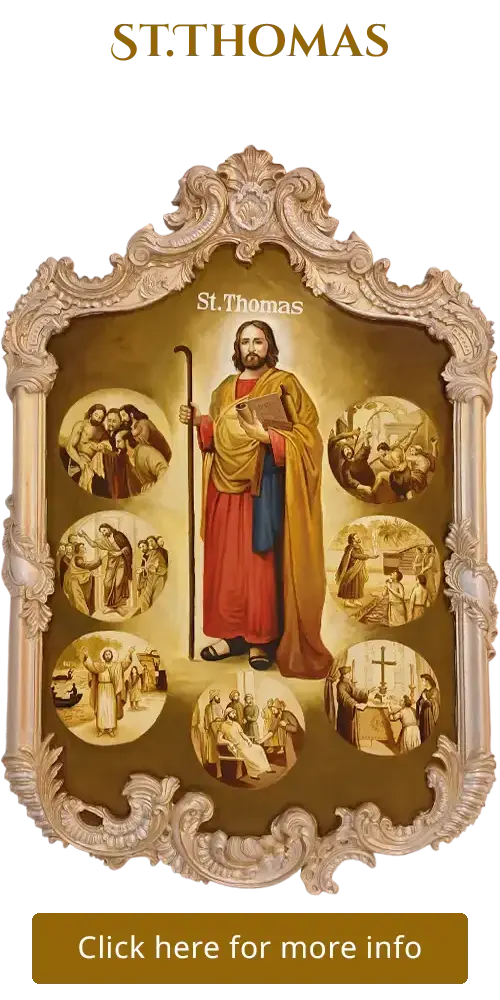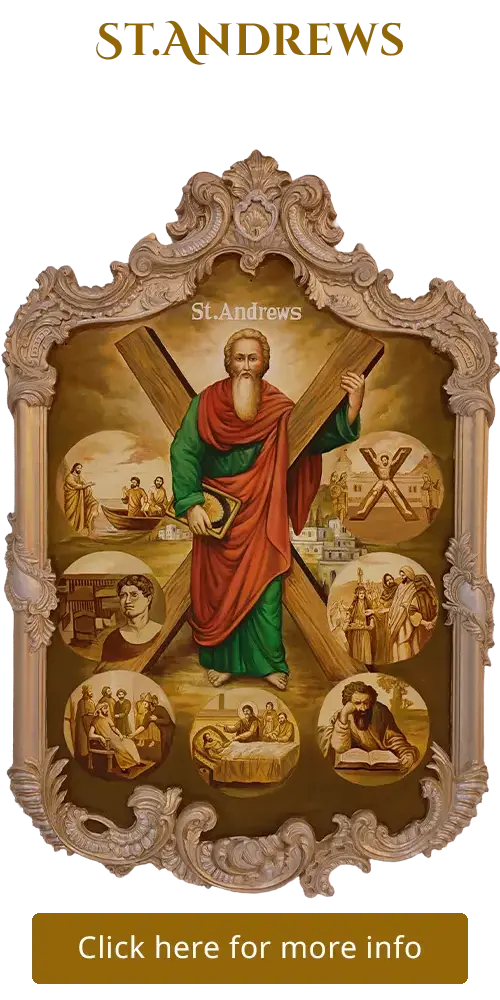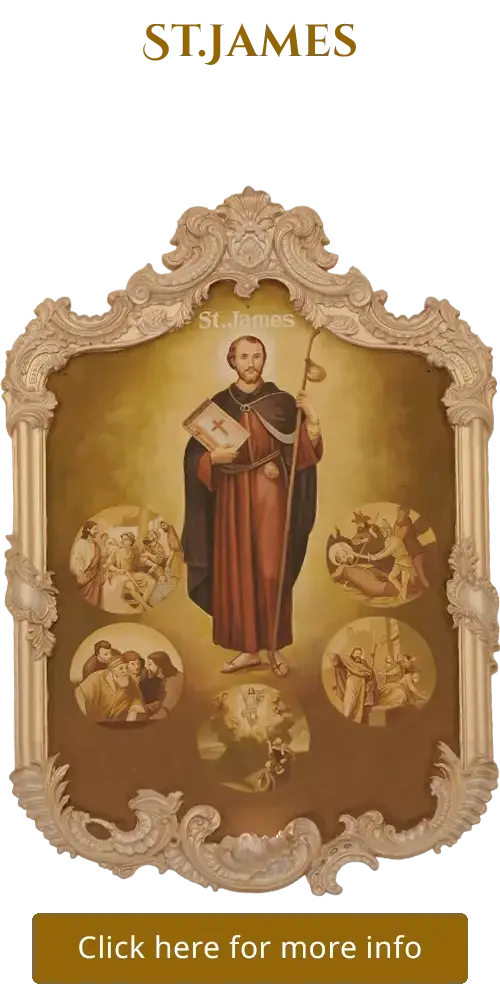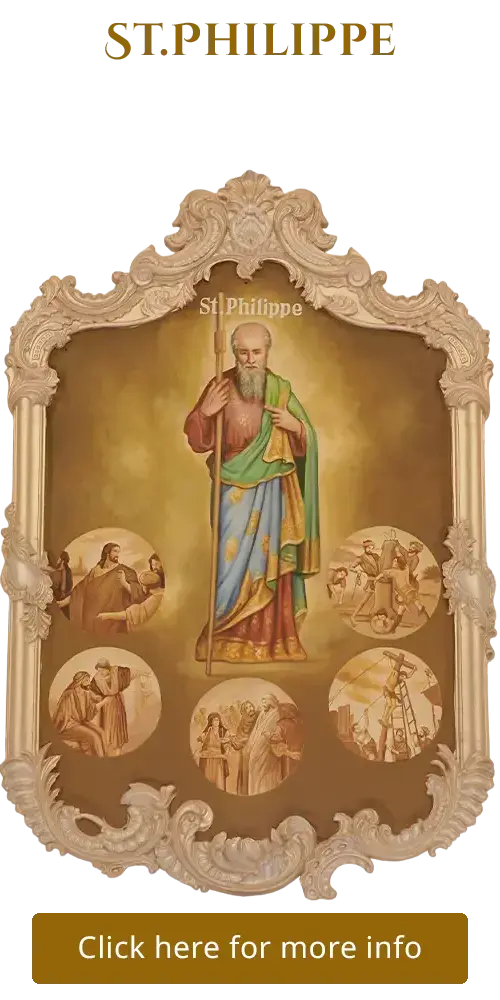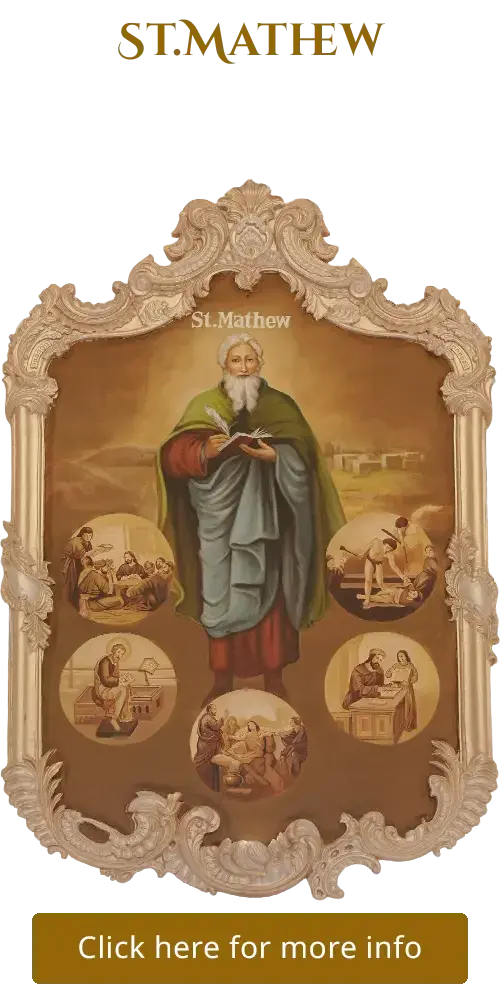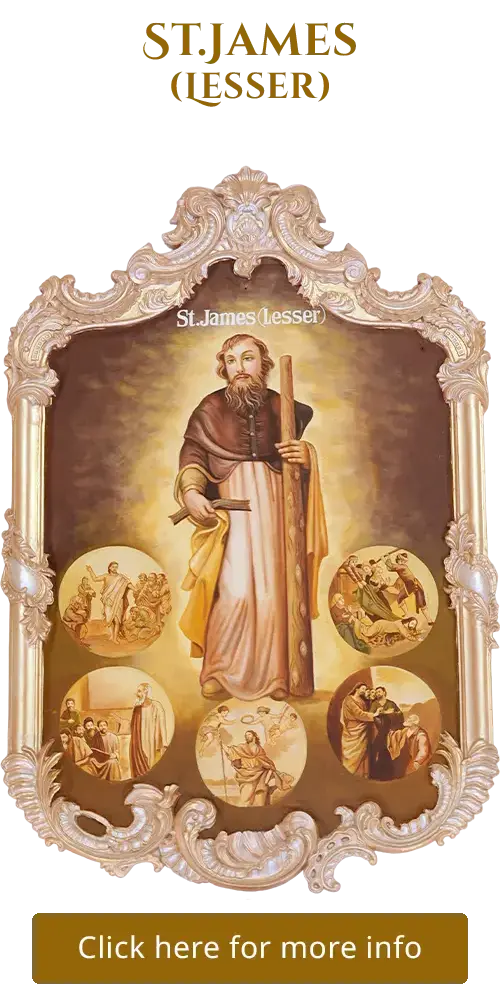St. James
Inside Paintings - North Wall
St. James
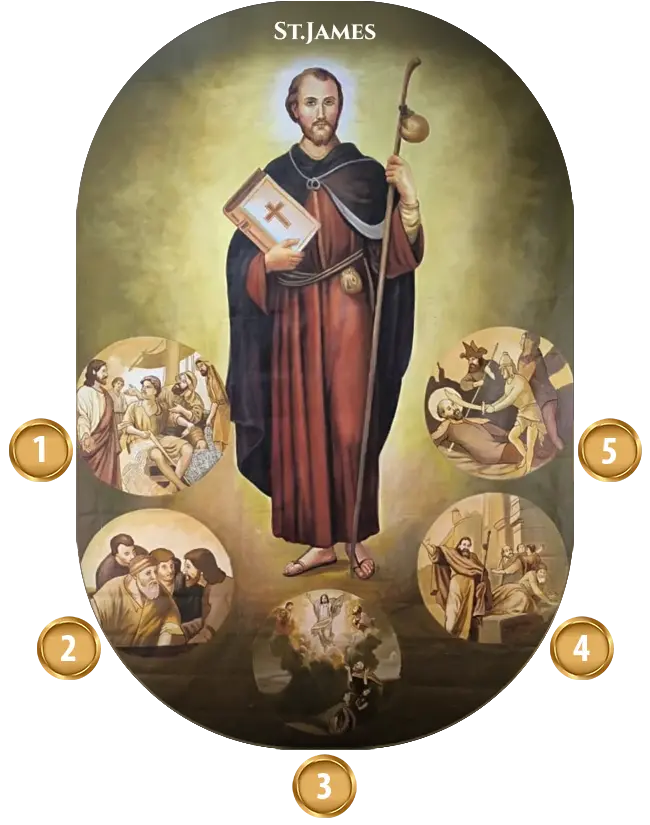


1. Call to Discipleship
Biblical Reference: Matthew 4:18-22
Description: St. James’s call to discipleship, as told in the Gospels, is a raw, powerful moment of transformation.
James, alongside his brother John, Peter, and Andrew, knee-deep in their daily grind as fishermen, mending nets by the Sea of Galilee. Jesus walks up and says, “Follow me.” No hesitation, no long debate – they drop everything and go. That’s the heart of it: a radical, immediate response to Jesus’s voice, leaving behind the familiar for an unknown road.
James’s life after that wasn’t easy – his fiery zeal earned him the nickname “Son of Thunder,” and he later faced martyrdom as the first apostle to die for Christ. His story shows discipleship isn’t just about basking in Jesus’s glory; it’s about carrying His cross, too.
John 15:16 captures it perfectly: “You did not choose me, but I chose you… to go and produce fruit.” It’s not about our plans or strength – it’s about Jesus choosing us, empowering us, and sustaining us to live for Him.
2. Request for Positions of Honor
Biblical Reference: Mark 10:35–45, Matthew 20:20–28
Description: This episode involves James, the son of Zebedee, and his brother John, who approach Jesus with a bold request, asking to sit at His right and left hand in His kingdom, seeking positions of honor and authority.
James and John say, “Teacher, we want you to do for us whatever we ask… Let one of us sit at your right and the other at your left in your glory.” This reflects their ambition and misunderstanding of Jesus’ mission.
Jesus challenges their request by asking if they can “drink the cup” He will drink or be “baptized with the baptism” He will undergo, referring to His suffering and death. They confidently (but naively) affirm they can, to which Jesus acknowledges they will face suffering but clarifies that such positions are not His to grant.
3. Witness to the Transfiguration
Biblical Reference: Matthew (17:1–8), Mark (9:2–8), and Luke (9:28–36)
Description: James, the son of Zebedee and brother of John, was part of Jesus’ inner circle, often present at key moments.
Jesus took Peter, James, and John up a high mountain, traditionally identified as Mount Tabor or Mount Hermon. Jesus was transfigured before them—his face shone like the sun, and his clothes became dazzling white. Moses and Elijah appeared, conversing with Jesus, representing the Law and the Prophets. A bright cloud enveloped them, and a voice from the cloud declared, “This is my beloved Son, with whom I am well pleased; listen to him”.
As one of the three disciples present, James witnessed this revelation of Jesus’ divine nature, reinforcing his faith and understanding of Jesus as the Messiah. The event underscored Jesus’ fulfillment of the Law (Moses) and the Prophets (Elijah).
4. St James's Missionary Work
Biblical reference: Mark 3:13-15, Acts 11:27-12:2, Luke 9:54
Description: St. James, known as James the Greater, was one of Jesus’ twelve apostles, commissioned to “proclaim the message” and given authority to cast out demons. His missionary work focused on spreading Christianity, particularly in Iberia (modern-day Spain and Portugal). According to tradition, James evangelized to both the Jewish diaspora and Gentiles in Spain, laying the groundwork for Christianity in the region. His efforts faced significant challenges, including cultural and religious resistance, but he persevered. A key tradition holds that in Zaragoza, James received a vision of the Virgin Mary, known as Our Lady of the Pillar, who encouraged him to continue his mission. This vision is considered a pivotal moment, strengthening his resolve and contributing to the establishment of one of Spain’s most significant Christian shrines.
James, along with his brother John, was nicknamed “Son of Thunder” by Jesus, likely due to their bold and zealous personalities. This is exemplified in Luke 9:54, where they suggested calling down fire from heaven on a Samaritan village that rejected Jesus, reflecting their fiery temperament and passionate commitment to their mission. Despite such impulsiveness, James’ dedication to spreading the Gospel left a lasting legacy, particularly in Spain, where he is venerated as Santiago, the patron saint.
5. Martyrdom of St. James
Biblical reference: Acts 12:1-2
Description: St. James, often referred to as James the Greater or James, son of Zebedee, was one of the first apostles of Jesus Christ and is traditionally considered the first apostle to be martyred.
Around 44 AD, King Herod Agrippa I, a grandson of Herod the great, in an effort to suppress the growing Christian movement, ordered the arrest of certain members of the Church. James, one of Jesus’ closest disciples and part of the inner circle (along with Peter and John), was seized and put to death by the sword. This makes him the first of the Twelve Apostles to suffer martyrdom.
The execution likely took place in Jerusalem, as Herod Agrippa I was ruling Judea at the time. The method of execution, “by the sword,” suggests beheading, a common form of capital punishment in the Roman world for those who were Roman citizens or deemed significant threats.
James was killed during a period of Passover or a Jewish festival. He was accused of blasphemy or sedition against Roman and Jewish authorities. Legends claim he preached boldly before his death, even converting one of his accusers or executioners. James is often depicted with a pilgrim’s staff, scallop shell, or sword, symbolizing his pilgrimage and martyrdom.


